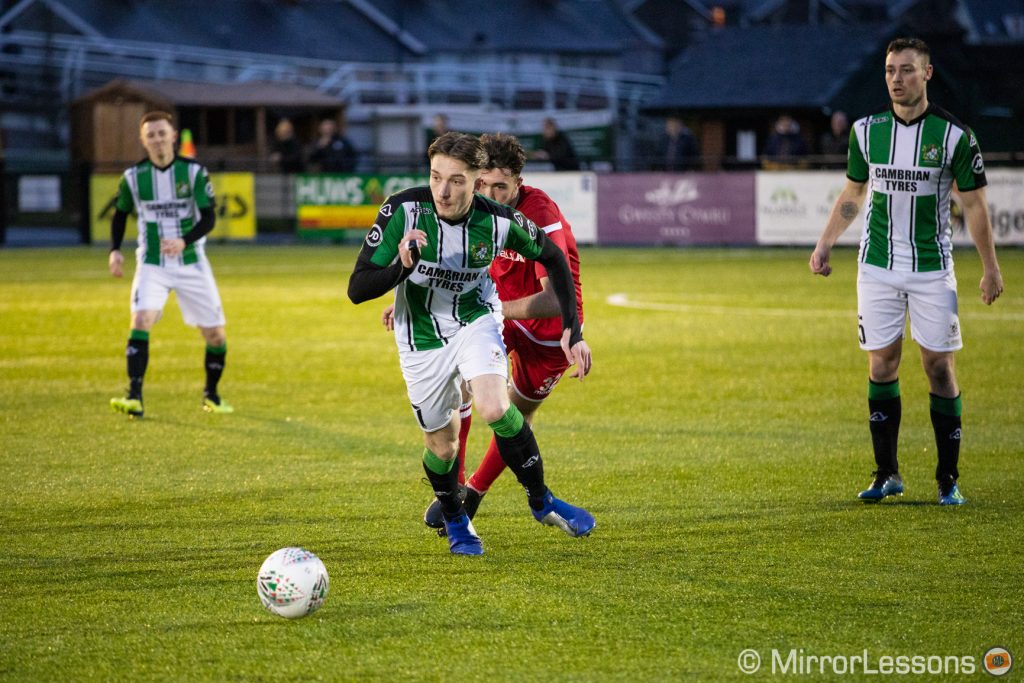The Canon R10 is the entry level model in the EOS R APS-C system, whereas the Canon RP is the most affordable camera in the EOS R full frame segment. As you might have guessed, they are part of the same family (the same RF-mount, meaning they can use the same lenses) and their price is also similar.
However, the gap in age means one of them has more up-to-date peformance in comparison to the other. Let’s see how they compare!
What the R10 and RP have in common:
- RF mount
- No in-body stabilisation
- Multi-angle LCD monitor with 1.04M dots and touch sensitivity
- 1 SD card slot (UHS-II) found in the battery compartment
- Wifi and Bluetooth connectivity
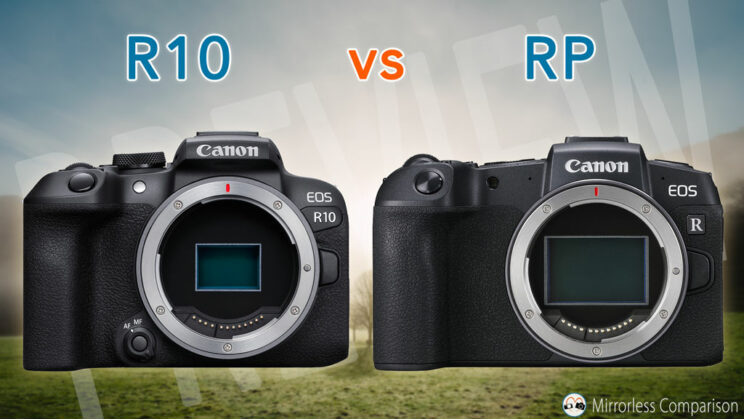
You might also be interested in:
Ethics statement: the following is based on official specs of the R10 and our personal experience with the RP. We were not asked to write anything about these products, nor were we provided any compensation of any kind. Within the article, there are affiliate links. If you buy something after clicking one of these links, we will receive a small commission. To know more about our ethics, you can visit our full disclosure page. Thank you!
1. Sensor
The two cameras use a different sensor, concerning the size and resolution.
The R10 includes an APS-C sensor with 24.2MP, whereas the RP has a full frame sensor (35mm format) with slightly more resolution (26.2MP).
The image below gives you an idea of the difference in terms of size between the two formats. The crop factor of the R10, in comparison to the RP model, is 1.6x.
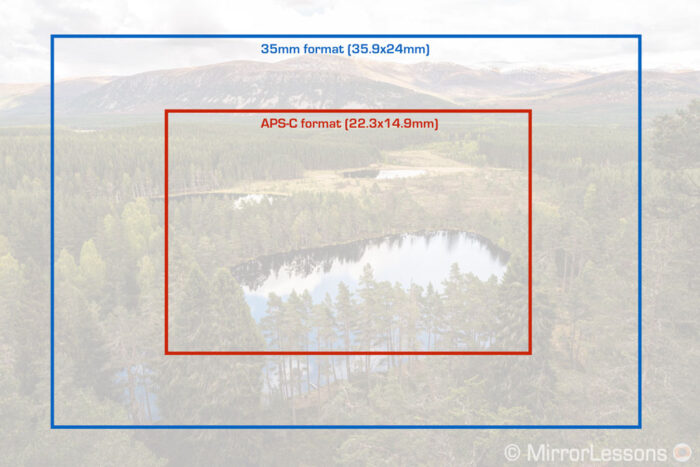
The sensor inside the R10 is a new version of previous chips found on older cameras such as the M50 mark II. More specifically, the micro lenses on the surface as well as the electronics have been upgraded to improve quality and performance. The APS-C camera also sports the latest image processor available, the Digic X.
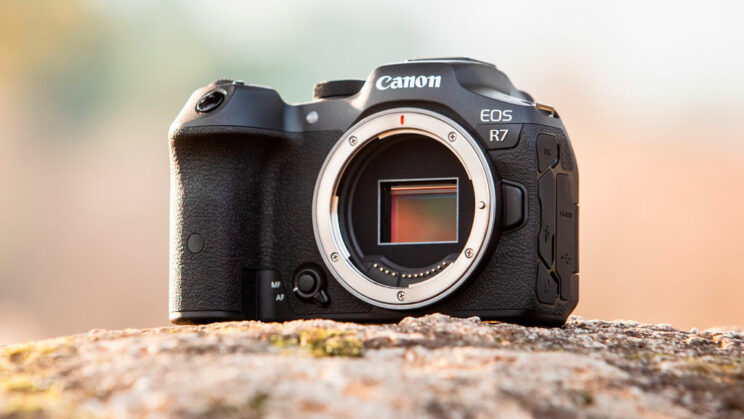
The RP uses an old sensor (same as the 6D II DSLR that came out in 2017). While the high ISO performance is decent, the dynamic range is not great by today’s standards. Of course, we have yet to test the R10 sensor to see how it compares (the previous generation of Canon’s 24MP APS-C sensor didn’t impress either) but it’s fair to say that the RP uses old technology, which is also confirmed by the older Digic 8 processor (and as you will read further down, speed is not the RP’s forte).
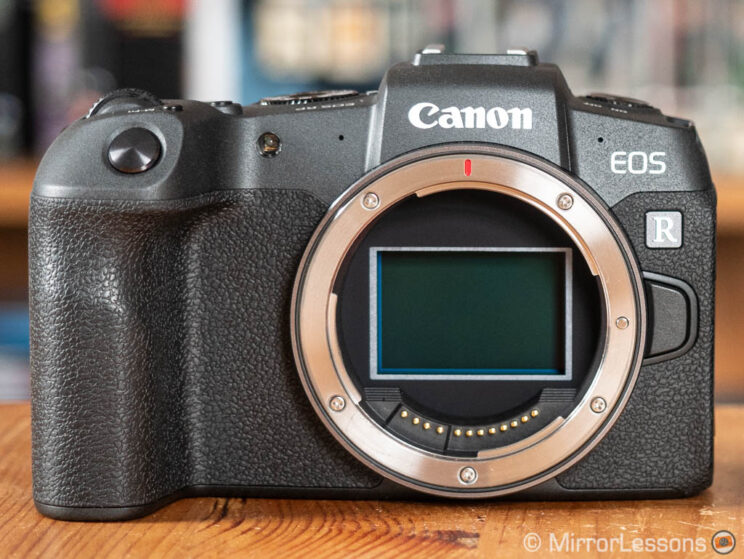
Concerning the sensitivity, the RP has a small advantage, at least on paper. Here is how the two cameras compare with the normal and extended ISO range.
Normal range
Extended range
R10
100 – 32,000
100 – 51,200
RP
100 – 40,000
50 – 102,400
2. Autofocus
The R10 features the latest generation (mark II) of Canon’s Dual Pixel CMOS AF, and has advanced algorithms that comes straight from the flagship R3 model. The APS-C camera can track subjects such as humans, animals and vehicles, and focuses automatically on the body, head and eyes, or helmet in the case of motorcycles and open race cars.
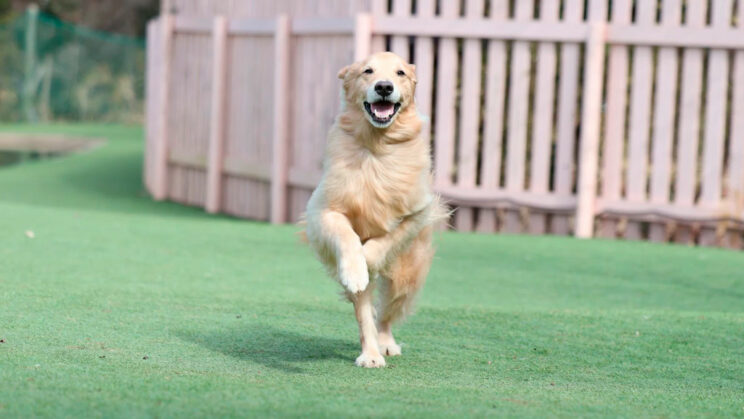
The RP features an older version of Canon’s AF system that is still capable of good results concerning Face and Eye detection for humans, or tracking at a sport event, but lacks the most advanced software and can’t recognise animals or motorsports vehicles.
The number of points used is slightly different between the two models. When the 1-point AF mode is selected, you can move the area to 4,503 different positions on the R10, and 4,779 positions on the RP.
Then, we have the minimum sensitivity in low light, where this time it is the RP that offers an advantage:
- R10: -4Ev (with F1.2 lens)
- RP: -5Ev (with F1.2 lens)
3. Drive Speed
The R10 can work up to 15fps with the mechanical shutter, or 23fps with the electronic shutter. It also comes with a special mode called Pre-Shooting, which allows you to save photos before the shutter button is fully pressed. This is very useful for action that is difficult to predict, such as a small bird flying off a tree for example.

The RP doesn’t come close to the speed of the APS-C model: it can go up to 5fps, but if you want focus priority, the speed drops to 4fps.
Also, in my personal experience with the RP, the lag in the viewfinder is severe (both at the beginning and end of a sequence) which makes it more difficult to capture fast and decisive moments. I have yet to see how the R10 behaves of course, but if recent Canon cameras such as the R6 are anything to go by, the lag should hopefully be reduced.
Concerning the buffer, the difference in burst speed hardly makes it a fair comparison to begin with, but one positive for the RP is that in my tests it never slowed down with either RAW or JPGs.
R10
RP
5fps
–
Unlimited
JPG and RAW
15fps
460 JPG
29 RAW
–
23fps
70 JPG
21 RAW
–
4. Movie Recording
Here as well, we find superior performance from the R10.
The APS-C model can record 4K up to 30p with no sensor crop, oversampling from a 6K area to ensure the maximum quality. If you want 60p however, the R10 crops the field of view by approximately 1.6x.
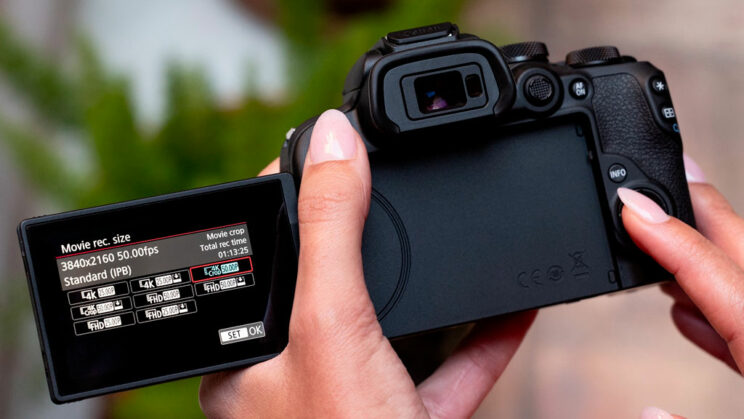
The RP can record 4K up to 25p, but the sensor is cropped by almost 1.8x, which is even higher than the APS-C crop. All this can sound a bit confusing, so you can find in the table below an example on how the field of view of a 35mm lens changes according to the sensor format, and the setting used on each camera.
35mm focal length
R10
RP
4K 25p
56mm
(APS-C crop)
63mm
(1.8x crop)
4K 30p
56mm
(APS-C crop)
–
4K 60p
89.6mm
(APS-C + 1.6x crop)
–
In Full HD, both cameras can record without a sensor crop. The RP goes up to 60p, whereas the R10 can go up to 120p with the High Speed Mode.
One important thing to understand about the EOS RP is that in 4K, the autofocus works with contrast detection rather than phase detection (Dual Pixel CMOS AF). This means a much slower and less reliable performance, unless you switch to Full HD.
Then we have the bit depth and bit rate, where the R10 is once again ahead with the possibility of recording more data per second, and having the option of 10-bit 4:2:2 for internal recording when using the HDR PQ profile.
35mm focal length
R10
RP
4K 8-bit
120M (30p)
170M (60p)
120M (25p)
4K 10-bit
230M (30p)
340M (60p)
–
C-Log
–
–
HDR
HDR PQ
–
The R10 comes without the 30 minute / clip limitation, unlike the R6. According to Canon, the R10 should be able to record 4K 30p (HQ quality) for approximately 50 minutes (with a temperature of 23˚C or lower). Gordon Laing from CameraLabs was able to exceed that, but as he rightfully pointed out, the limited battery life of the R10 means you’ll rarely go beyond 60 minutes anyway.
Last but not least, both cameras have a headphone output and a microphone input. On the R10, you’ll also find the new multi-function shoe that allows you to record digital audio (with compatible microphones).
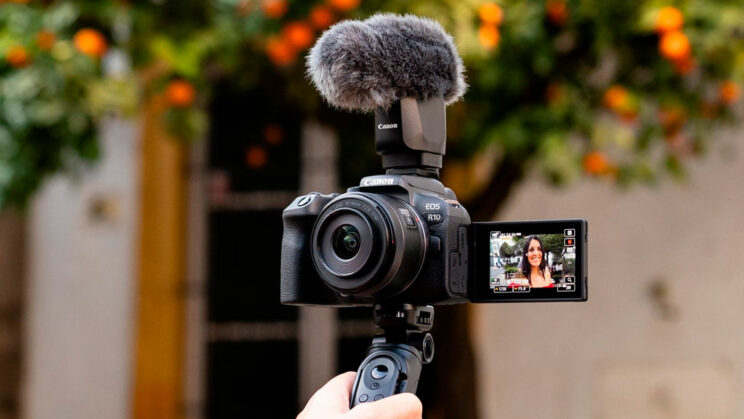
5. Viewfinder
The electronic viewfinder found on both cameras may look similar at first, but there are a few key differences.
They both use a similar OLED panel, but the R10 has a faster refresh rate, whereas the optical components on the RP give you a larger magnification.
R10
RP
Panel
0.39-in OLED
0.39-in OLED
Resolution
2.36M dots
2.36M dots
Refresh rate
120Hz
60Hz
Magnification
0.59x
0.70x
Eyepoint
22mm
22mm
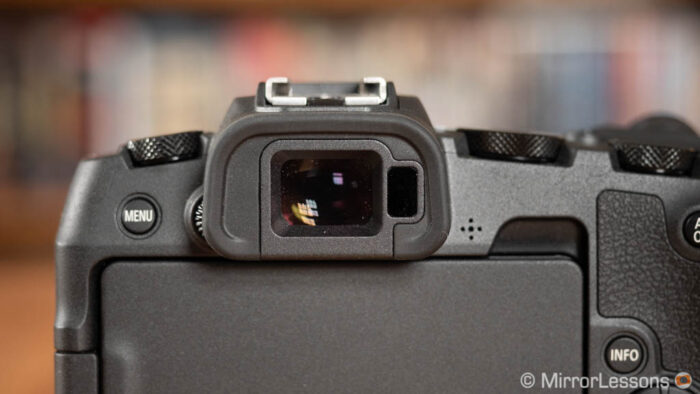
6. Design
The RP is larger than the R10, but the weight remains quite close. The RP has weather sealing, although it is not as advanced as high-end Canon products.
- R10: 122.5 x 87.8 x 83.4mm, 429g
- RP: 132.5 x 85 x 70mm, 485g
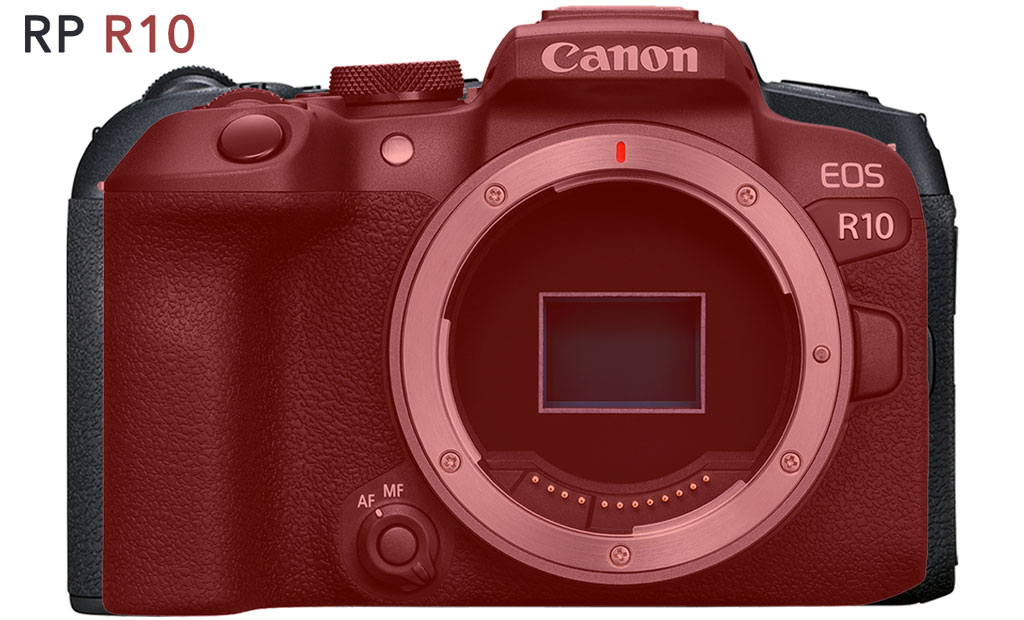

The control layout is similar overall with two dials on top to control the exposure, and a similar number of buttons on the rear.
The R10 has an additional AF/MF switch at the front (with a button at the centre to change AF Zone) and AF Joystick on the rear. The latter is certainly what I missed the most on the RP model.


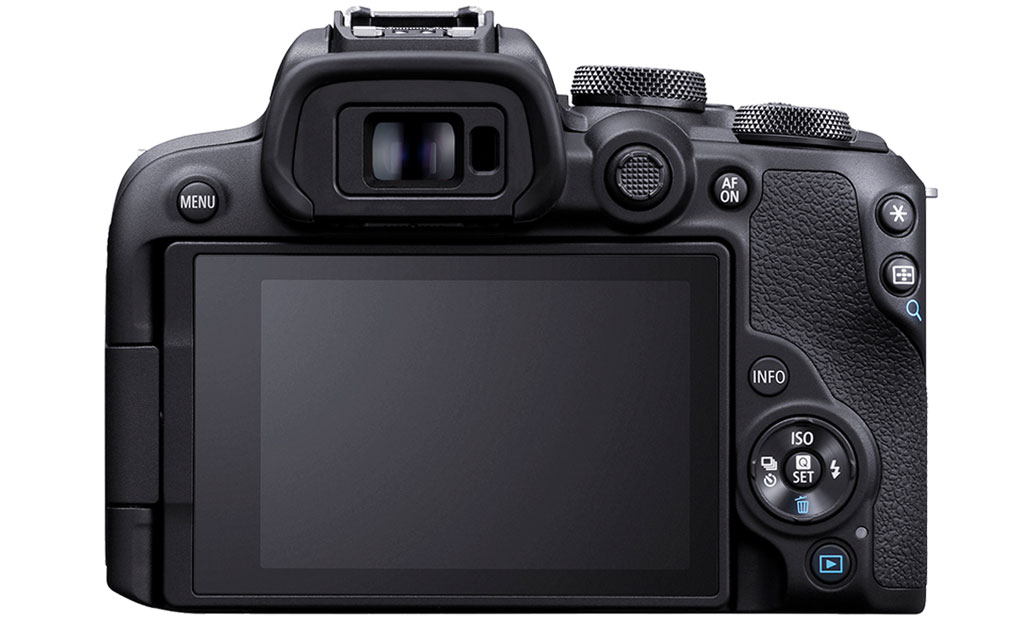
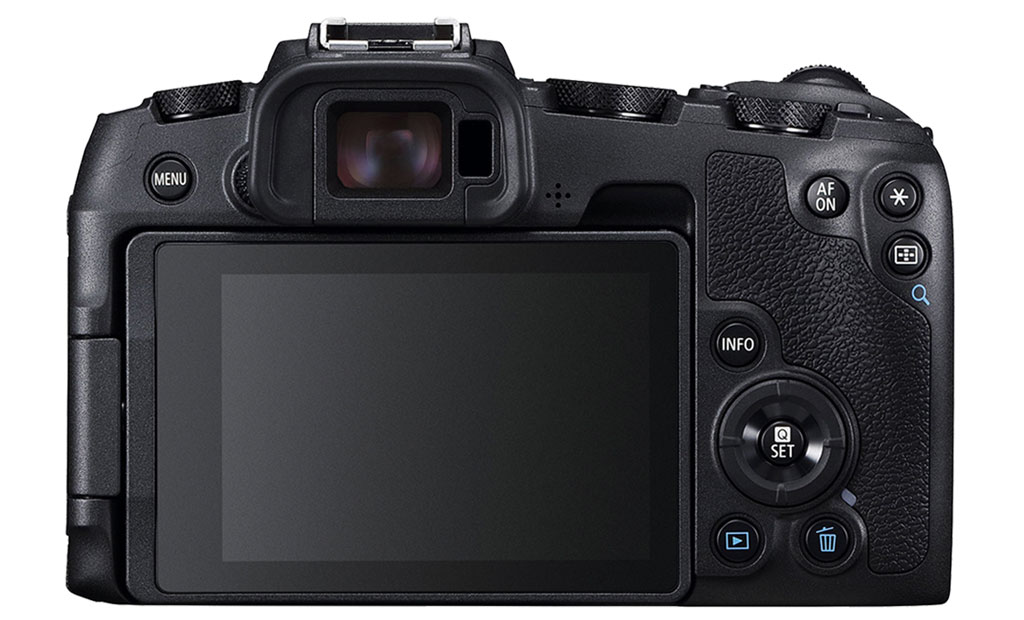
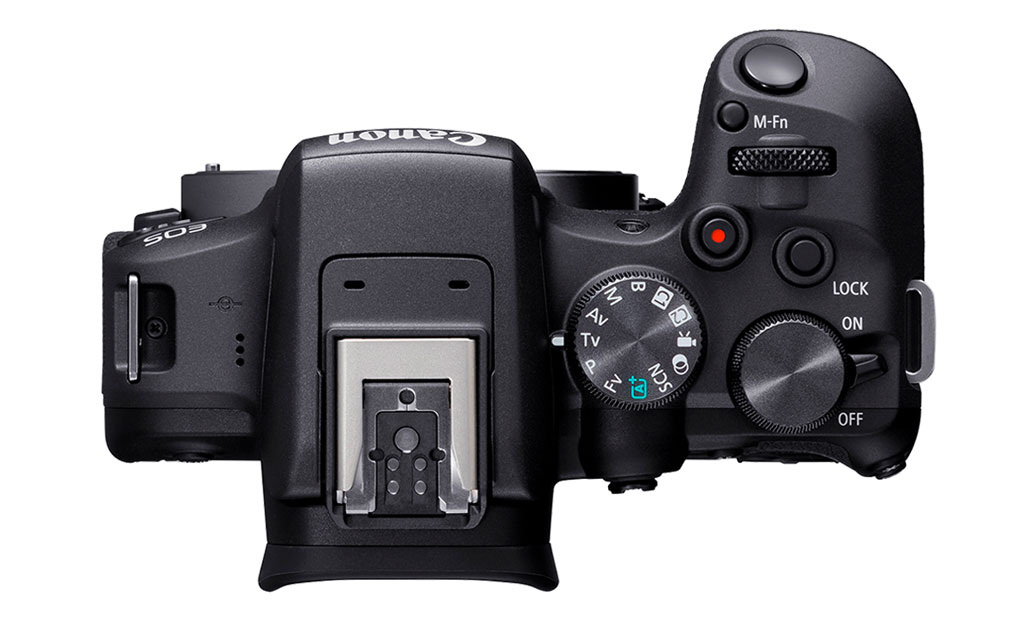
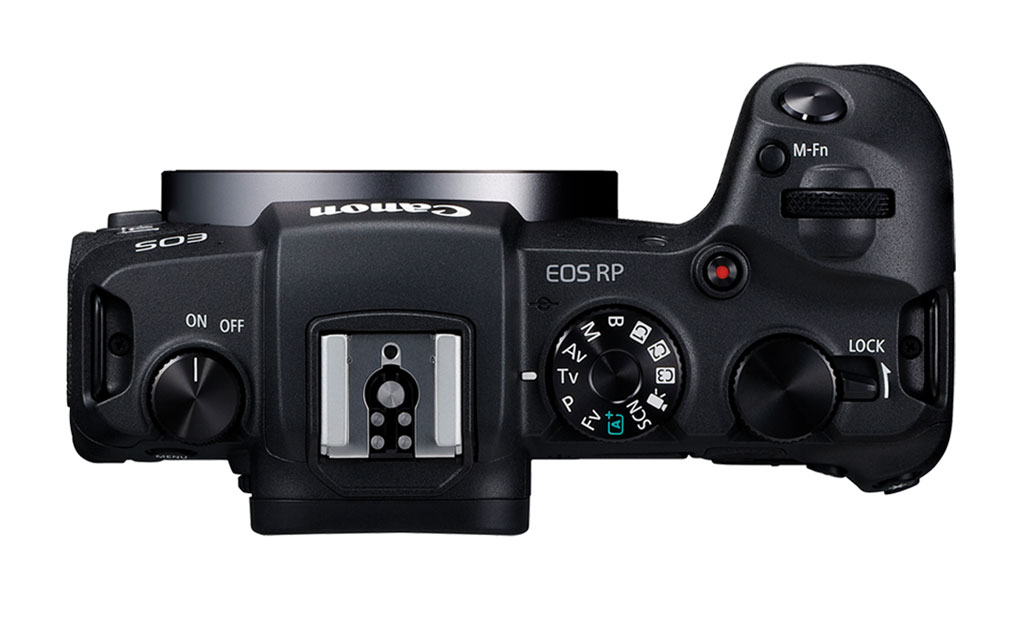
7. Battery life
The two cameras use the same battery type, the LP-E17, but their battery life rating is different.
The R10 can manage 430 images when using the LCD, or 260 images when using the viewfinder.
The RP can manage approximately 250 frames (LCD) or 210 frames (EVF).
As always, remember that these figures (CIPA standard) never represent real world use, where you can easily achieve higher figures than those suggested above. Nevertheless, they give you an idea of which performs better.
8. Extra Features
The R10 and RP don’t pack an impressive list of extra functionalities, but there are a few things I wanted to point out.
First of all, the electronic shutter (silent mode) on the RP is only available in the Scene mode. You cannot activate it when working in Manual or Semi-Auto exposure mode. This is a big difference with the R10, where the camera takes advantage of the electronic shutter for various things: increasing the drive speed to 23fps, and extending the shutter speed to 1/16000s (both cameras max out at 1/4000s with the mechanical shutter).
One of my favourite settings on Canon cameras is Focus Guide, a manual focus assist that uses the Dual Pixel CMOS AF technology and gives you a level of precision that I never found on any other camera I’ve tested. Unfortunately, the RP doesn’t have this option, for reasons unknown to me.
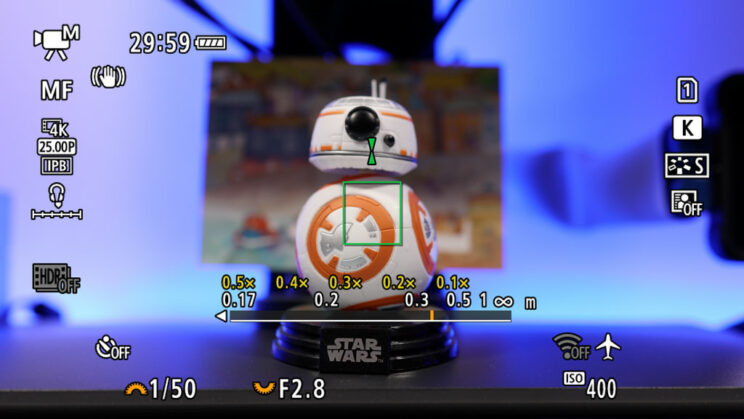
Both cameras include focus bracketing, but only the R10 has an option to do Focus Stacking in-camera. With the RP, you have to merge the shots in post using the Canon EOS Digital Photo Professional software, or a third-party application.
9. Lenses
As I wrote at the beginning, you can use the same RF lens on the R10 and RP, but there are a few things to point out.
First, the EOS R system was launched in 2018, but only in 2022 did Canon unvail the first two APS-C cameras (R10 and R7). All the other cameras, including the RP, are full frame cameras and as you can imagine, the company has concentrated on producing full frame lenses first.
Among the full frame line-up, there are some affordable options, but also many that have a high price, and this is something important to highlight because potential buyers of the R10 might not want to spend three grand on a telephoto lens, or a fast aperture portrait lens. The support for the RF-mount from third party manufacturers (Sigma and Tamron especially) is absent as of now, which makes the choice of lenses more restricted, unless you adapt EF-S DSLR lenses.
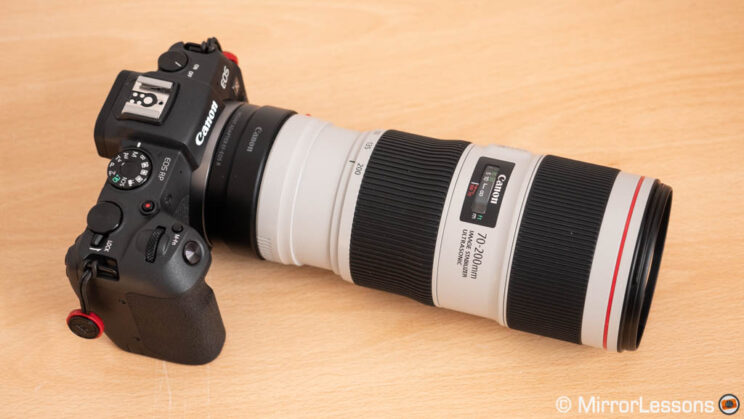
Another thing to keep in mind is the 1.6x crop factor, which can be beneficial on the R10 with telephoto lenses (more reach), but limiting with short focal lengths (not wide enough).
Alongisde the R10, Canon has launched its first two APS-C RF lenses, the RF-S 18-45mm F4.5-6.3 IS STM and RF-S 18-150mm F3.5-6.3 IS STM. Hopefully, more will come in the future, as rumoured by Photorumors. Of course, we need to give Canon time to build the APS-C catalogue just like we did for the full frame segment, but in the meantime, keep this in mind.
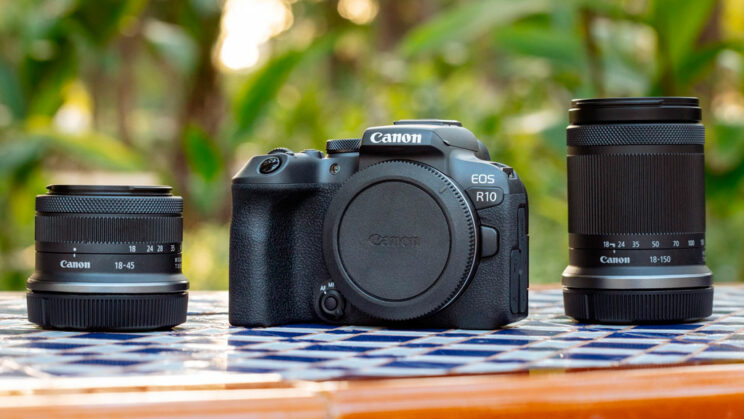
10. Price
The R10 has been launched with a retail price of $980, £900 or €1030 for the body only.
The RP can be found for a similar price, starting at $1000, £1050 or €1100.
The kit lenses on offer are also different. The R10 can be bought with either the 18-45mm (29-72mm equivalent) or the 18-150mm (29-240mm equivalent).
- R10 with 18-45mm: $1100 / £1000 / €1100
- R10 with 18-150mm: $1380 / £1250 / €1370
There is only one kit lens for the RP:
- RP + 24-105mm F4-7.1: $1300 / £1330 / €1400
Note: prices are as of late May 2022. Bundles with the R10, kit lens and EF to EOS R adapter may be available depending on the region. The RP, being an older model, can be subject to temporary discounts or special offers.
You might also be interested in:
Conclusion
The similarity in price will probably be the main reason why you’re hesitating between these two cameras. That said, if we consider the kit lens, the R10 is cheaper with the small 18-45mm.
Cost aside, these two cameras couldn’t be more different. First, the RP was released at a time when Canon still hadn’t caught up with its mirrorless competitors. It has an old sensor and image processor, and speed-wise, it is slow, not just because of the low burst rate, but also because of the lag in the viewfinder. It is a shame because the autofocus is not bad, giving me good results for football and portraits. For video, 4K recording is too limited, so consider it only if you want to record in Full HD. As long as you’re happy knowing all that, it certainly is a decent full frame camera for the price if you want to stay with or join the Canon RF system.
The R10 is much more recent and employs some of the latest technology Canon has to offer: this means much faster continuous shooting speeds, a more advanced autofocus system and more advanced video capabilities. It is also smaller and, if you’re not bothered by the smaller APS-C sensor (which may have better performance in the end, being more recent), the R10 can be a great camera to begin with. For now though, it’s important to know that there isn’t a huge selection of affordable lenses, especially if you’re looking for fast primes. But that will change, hopefully.
Reminder: the links below are affiliate links. If you decided to buy something after clicking the link, we will receive a small commission.
Check price of the Canon R10 on
B&H Photo
Check price of the Canon EOS RP on
Amazon | Amazon UK | B&H Photo | eBay

